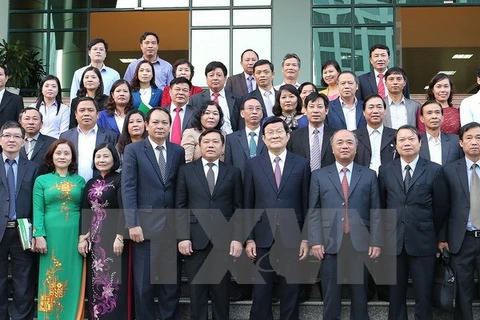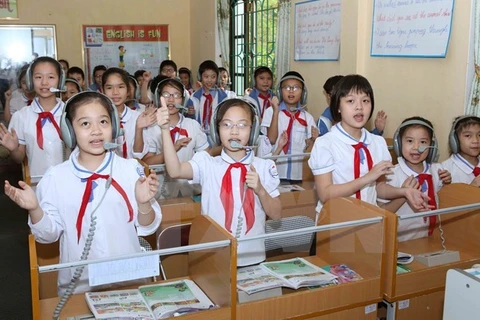Hanoi (VNA) – A conference was held in Hanoi on December 10 to seek rapid and sustainable poverty reduction measures for the northwestern region, where the number of low-income households is highest in Vietnam.
The Steering Committee for the Northwestern Region reported that the region, and its worst poverty-hit provinces of Ha Giang, Cao Bang, Yen Bai, Son La, Dien Bien and Lai Chau in particular, have made certain progress in infrastructure development thanks to various resources and national target programmes.
The region’s household poverty rate dropped from 34.41 percent in late 2010 to 18.26 percent at the end of 2014, an average annual decrease of 3.91 percent.
Vice Chairman of the Lai Chau People’s Committee Le Trong Quang said his province, the most deprived locality in Vietnam, has made efforts to escape from poverty. It has cut down the rate of poor families by 5 percent every year to 21 percent by the end of 2015.
At the conference, World Bank’s Country Director for Vietnam Victoria Kwakwa said Vietnam has reaped impressive accomplishments in poverty reduction, including those relating to non-income indicators like health care, nutrition and education. It is in the right direction.
However, those attainments have not lived up to expectations, and the country needs to make more efforts, she noted.
Sharing the same view, Deputy PM Phuc said many regional localities have not ensured sustainable poverty elimination. The six above-mentioned provinces form the “core of poverty” of the country.
The average household poverty rate there ranges between 20 and 30 percent, he stressed, adding that the figure will be much higher if it is calculated by the multidimensional poverty measurement method.
The newly-issued method, applied from 2016 to 2020, evaluates poverty with regard to people’s access to health care, education, accommodation, clean water, hygiene, and information.
Victoria Kwakwa said despite a poverty decline, the development gap among northwestern provinces has not been narrowed and poverty still concentrates in the region.
At the conference, a number of measures were suggested to get rid of poverty, including the provision of concessional loans in the principle of conditional support so as to improve beneficiaries’ awareness and responsibility.
State agencies should issue favourable policies to attract businesses’ investment in agriculture, forestry, tourism and services that could generate jobs for local residents, participants said.
Deputy PM Phuc noted it is vital to prevent the “disease of achievement” in poverty elimination, adding that northwestern provinces must step up socio-economic development by tapping into regional advantages like agriculture, forestry, processing industry, tourism, services and cross-border economic activities.
He also underlined the necessity of bettering the local business climate to attract domestic and foreign investment and boost widespread connectivity to fuel mass production.
Poverty reduction must be the focal mission of the entire political system, especially in northwestern provinces, the official said, asking for increased communications and support to help locals escape from poverty by themselves.
Under the multidimensional poverty standards, comprehensive and result-oriented measures must be employed to simultaneously raise people’s income and access to basic social services, ultimately ensuring sustainable poverty eradication, he emphasised.-VNA

























